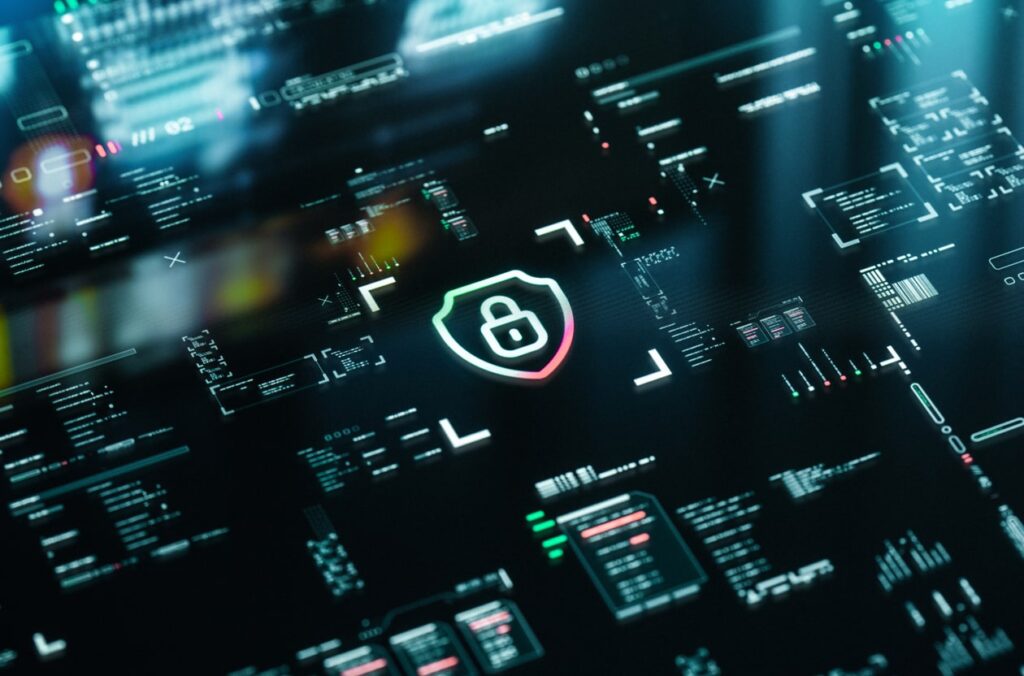Cybercrime is a costly prospect for businesses all over the world. It can cost companies billions of pounds and, in some cases, can even render businesses bankrupt having to deal with the effects. According to Cybersecurity Ventures, the worldwide cost of cybercrime is predicted to grow to $10.5 trillion by 2025. With technology becoming more and more sophisticated, there is a growing fear in the world of cybersecurity that these lethal attacks will multiply.
Despite this, technological advances can work in favour of businesses too, and with the growth of artificial intelligence (AI) and machine learning over the last 12 months, there is an opportunity for firms to leverage cyber AI to help give themselves greater peace of mind. According to Allied Market Research the global AI in cybersecurity market was valued at $19.2 billion in 2022, but is estimated to be worth $154.8 billion by 2032. This outlines the effect that AI is expected to have on the cybersecurity industry over the next decade. But how can AI actually enhance cybersecurity? This article will explore the top six ways AI can be used to offer greater network security for businesses.
6 Ways AI Enhances Cybersecurity…

Threat Detection and Analysis
AI-driven threat detection is a critical part of modern cybersecurity. AI algorithms are highly proficient in detecting irregularities and trends that suggest potential cyber threats, as they can process vast datasets in real-time. This capability empowers AI to recognise patterns, behaviours, and anomalies that might point to potential cyberthreats. AI-driven detection, in contrast to conventional rule-based systems, is able to identify subtle departures from the norm, which are frequently the first indicators of a breach or malicious activity.
The essence of AI-based threat detection lies in its adaptability. Machine learning models continuously adjust their understanding of normal and abnormal behaviour by learning from historical data. This flexibility is essential in the dynamic threat landscape of today, where adversaries use cunning strategies to get around established defences. AI-driven threat detection is extremely useful for zero-day attacks because it can identify new threats without predefined signatures.
AI can categorise incidents based on potential impact, allowing security analysts to prioritise responses and allocate resources effectively. Furthermore, incident investigation is streamlined by AI’s ability to contextualise detected anomalies, which cuts down on the time needed to determine the origin and extent of an attack.
Predictive Analytics
AI-powered predictive analytics is a game-changer in cybersecurity. By leveraging historical data and machine learning algorithms, AI can forecast potential security risks and vulnerabilities. This predictive capability enables security teams to safeguard important assets and strengthen their defences to stay a step ahead of cyber threats.
The capacity of predictive analytics to recognise new trends and patterns is priceless. AI is able to identify subtle variations in the threat landscape, like modifications to attack strategies or the focus on particular weaknesses. Organisations can prioritise their security efforts and allocate resources where they are most needed thanks to this foresight.
Predictive analytics can also evaluate the security posture of an organisation over time and identify potential weak points and areas for improvement. AI can suggest proactive security measures, like network segmentation or enhanced access controls, to reduce the attack surface by continuously analysing data.
Automated Response
AI systems are capable of taking quick action to reduce risks and lessen the impact of cyberattacks when they identify threats or suspicious activity. Patches and updates may be installed, malicious network traffic may be blocked, or compromised systems may be isolated. There are a number of clear benefits to automated response. Its primary benefit is that it speeds up the response time to cyber threats considerably. While human intervention can introduce delays, AI acts instantaneously upon detecting a threat, potentially thwarting an attack before it can cause substantial harm.
Furthermore, automated response reduces the possibility of human error. AI-powered systems make sure that responses are carried out precisely and without supervision by continuously applying pre-established security protocols. This is especially crucial in high-pressure scenarios where errors can have severe repercussions.
What’s more, AI-driven automated responses are adaptable. An incident management strategy that is specific to an organisation can be implemented by defining response actions according to the type and severity of the threat. Security teams can implement tailored response strategies in accordance with their unique security policies and requirements thanks to this flexibility.

Endpoint Security
AI-enhanced endpoint security is essential for protecting individual devices, including PCs, smartphones, and IoT devices. The front line of an organisation’s defence against cyber threats consists of these endpoints. AI-driven endpoint security systems keep an eye on these devices all the time for indications of malware, questionable activity, or vulnerabilities.
AI excels in providing real-time protection for endpoints. It analyses file activity, network traffic, and system behaviour on individual devices using sophisticated algorithms. It can quickly identify and reduce risks by continuously monitoring endpoints, making sure that threats are stopped before they can infiltrate the network or access private information.
Furthermore, the threat intelligence that AI can offer is crucial for endpoint security. AI-powered solutions are able to instantly analyse threat data and give security teams useful insights. These insights contain information on the types of threats, which endpoints are impacted, and suggested countermeasures. Security teams are better equipped to react quickly to new threats and stop them from infecting the entire company infrastructure thanks to this real-time information.
Threat Intelligence
Vast amounts of threat data from various sources can be processed and arranged with ease by AI-driven systems. They are excellent at deriving valuable conclusions from this data, giving security teams fast access to useful information about new threats.
The speed of AI-driven threat intelligence is one of its main benefits. AI is capable of quickly analysing and correlating data from a wide range of sources, such as internal network logs, dark web forums, and open-source feeds. By reducing the window of vulnerability, this quick analysis guarantees that security teams are promptly informed of emerging threats.
AI is essential for contextualising threat intelligence as well. AI can generate customised risk mitigation recommendations by comparing threat data with the unique environment and vulnerabilities of an organisation. Security teams are better equipped to prioritise tasks and carry out focused security measures thanks to this contextual awareness.
User and Entity Behaviour Analytics (UEBA)
UEBA systems are designed to continuously observe system and user behaviour on an organisation’s network in order to identify any deviations from predefined baselines. UEBA helps detect suspicious activity that traditional security measures might miss, such as compromised accounts and insider threats, by spotting odd patterns and behaviours.
AI plays a pivotal role in UEBA’s effectiveness. AI algorithms can process vast amounts of data from various sources, including logs, network traffic, and endpoint activities, in real-time. This ability allows UEBA to create accurate profiles of typical user and entity behaviour, making it easier to spot deviations that might indicate malicious activity.
Insider threats can be difficult to detect with conventional signature-based methods; this is where UEBA comes in handy. UEBA has the ability to examine user behaviour, including accessing private information or using strange login locations, and can set off alarms when patterns are broken. Organisations are able to look into and address possible insider threats before they become more serious thanks to this proactive approach.
Considerations of Adopting AI in Cybersecurity

Despite the numerous benefits of increasing the use of AI for cybersecurity, there are some things that need to be considered. Take a look below at some of the main considerations for AI in cybersecurity.
- Privacy and compliance – When using AI for cybersecurity, organisations need to follow privacy regulations and data protection laws. When handling sensitive data, make sure the AI systems respect people’s right to privacy and take anonymisation or pseudonymisation into account.
- Data quality and quantity – AI models heavily rely on data. It’s crucial to ensure that the data used for training and analysis is of high quality, accurate, and representative of the organisation’s environment. Additionally, having a sufficient volume of data is essential for AI systems to learn effectively and make accurate predictions.
- Transparency and explainability – Deep learning models in particular can be difficult to interpret. In situations where AI recommendations could impact human decision-making, think about implementing strategies to increase the transparency and comprehensibility of AI decisions.
- Human oversight and intervention – Instead of completely replacing human decision-making, AI should support it. To make sure AI recommendations are in line with organisational objectives and ethical considerations, maintain human oversight and intervention capabilities.
- Bias and fairness – Biases found in training data can be passed down to AI algorithms. To guarantee impartial and fair decision-making, AI models must be routinely audited and biases must be reduced, particularly in applications such as threat detection and user monitoring.
Conclusion
The integration of AI technology in cybersecurity is a significant leap in our continuous struggle against an ever-evolving and persistent digital threat landscape. AI-driven cybersecurity solutions have unmatched benefits, including real-time threat detection and rapid response to predictive analytics and enhanced user and entity behaviour analysis. These technologies enable businesses to protect sensitive data and important assets more effectively and precisely than in the past.
However, with great power comes great responsibility. Organisations implementing AI in cybersecurity must be acutely aware of the issues at hand, including data quality, privacy, transparency, and ethical application. Achieving the best outcomes requires finding the ideal balance between human expertise and AI capabilities.
For any more information on AI in cybersecurity, check out this article.











